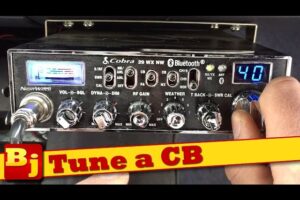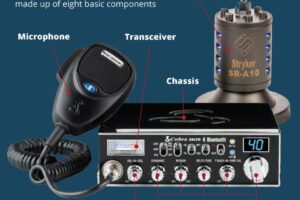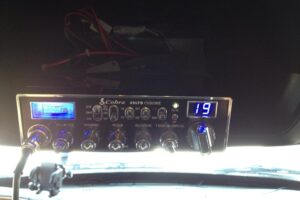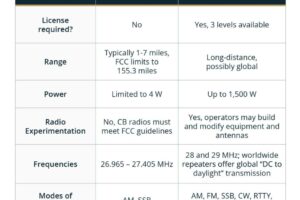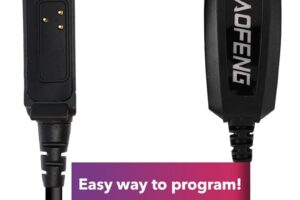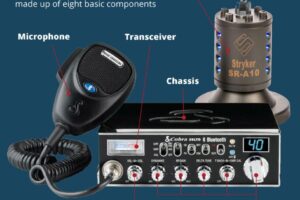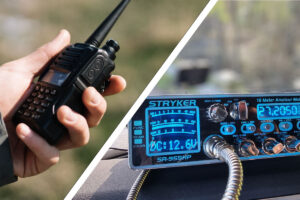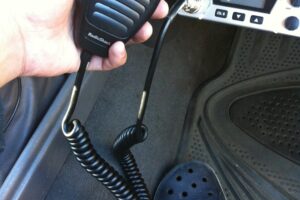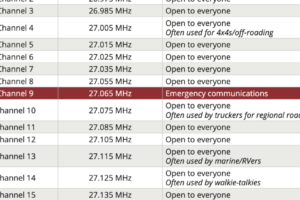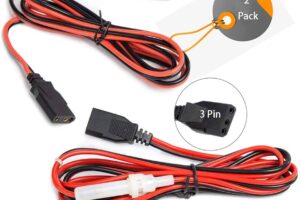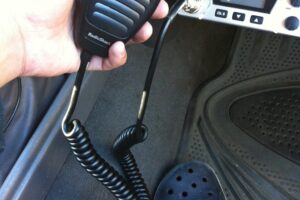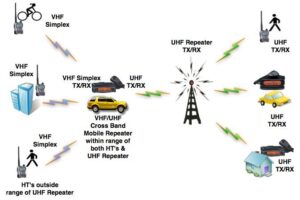How to Set Up a CB Radio at Home: A Step-by-Step Guide
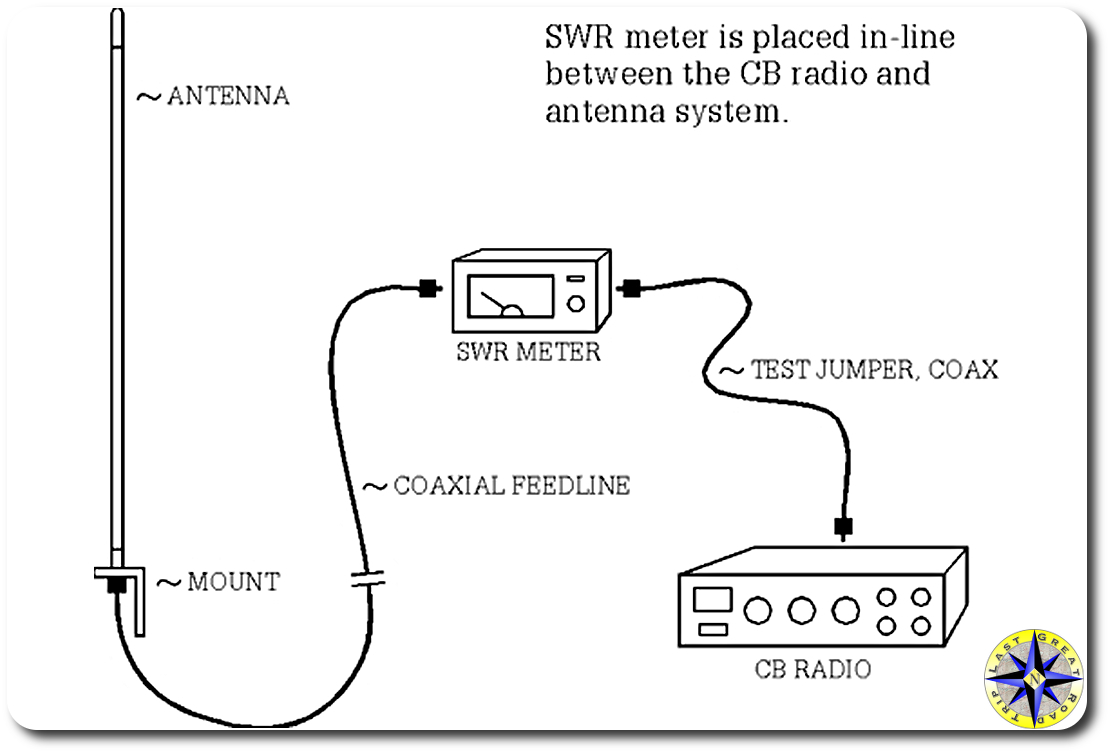
Setting up a CB radio at home is easier than you think. It offers a great way to stay connected with friends and family.
CB radios have been popular for decades. They provide reliable communication without the need for a mobile network. Whether you’re an enthusiast or a newbie, setting up a CB radio at home can be fun and useful. This guide will walk you through the process.
You will learn what equipment you need and how to install it properly. Soon, you’ll be able to enjoy clear, effective communication from the comfort of your home. Let’s get started!
Introduction To Cb Radios
Welcome to the fascinating world of CB radios! Setting up a CB (Citizen’s Band) radio at home can open up a new hobby. You can connect with other enthusiasts and enhance your communication skills. Before diving into the setup, it’s essential to understand what a CB radio is and how it can be used.
What Is A Cb Radio?
A CB radio is a short-distance communication device. It operates on 40 channels within the 27 MHz band. Unlike other radio services, CB radios do not require a license. This makes them accessible to everyone. They are often used in vehicles but can also be set up at home.
Uses Of Cb Radios
CB radios serve multiple purposes. Truck drivers use them to communicate on the road. Hobbyists engage in conversations with others who share their interest. They are also useful during emergencies. When phone lines are down, CB radios can be a lifeline. Families can stay connected during outdoor adventures. Farmers use them to coordinate tasks on large plots of land.
Choosing The Right Cb Radio
Choosing the right CB radio is crucial for a great experience. The right model can make communication clear and effective. There are various options available, so it’s essential to know what to look for.
Types Of Cb Radios
There are several types of CB radios. The most common ones are mobile, handheld, and base stations. Mobile CB radios are designed for vehicles. They are compact and easy to install. Handheld CB radios are portable. They are perfect for outdoor use. Base station CB radios are for home use. They offer more features and better performance.
Top Brands To Consider
Several brands stand out in the CB radio market. Cobra is a popular choice. They offer reliable and user-friendly models. Uniden is another top brand. They are known for their durable and high-quality radios. Midland is also highly regarded. They provide excellent performance and value.
Choosing the right brand ensures you get a durable and efficient CB radio. Always consider your needs and preferences before making a decision.
Essential Equipment
Setting up a CB radio at home requires an antenna, coaxial cable, power supply, and the CB radio unit itself. Ensure proper grounding for clear communication.
Setting up a CB radio at home can be an exciting venture, but it requires some essential equipment to get started. The right tools ensure a smooth installation and optimal performance of your CB radio. Let’s delve into the critical components you’ll need.
Antennas
The antenna is a crucial part of your CB radio setup. It determines the range and clarity of your communication. Choose a high-quality antenna to enhance your signal strength.
There are various types of antennas available. For a home setup, consider a base station antenna. Mount it as high as possible, ideally on the roof, for the best range.
Think about the length too. Longer antennas typically offer better performance. Make sure it’s compatible with your radio and easy to install.
Microphones
A good microphone can significantly improve your communication experience. Stock microphones that come with CB radios are decent, but upgrading can offer better sound quality.
Consider a noise-canceling microphone. It helps in reducing background noise, making your voice clearer on the other end.
Look for ergonomic designs. You’ll be using the mic frequently, so it should be comfortable to hold and use.
Mounting Hardware
Mounting hardware is essential for securing your CB radio and antenna. Proper mounting ensures stability and optimal performance.
For the antenna, use sturdy brackets and mounts. They should hold the antenna firmly in place, even in adverse weather conditions.
When it comes to the radio itself, consider a mounting bracket that allows for easy access and adjustments. Place it in a convenient location within your home, where you can reach and operate it comfortably.
Choosing the right equipment for your CB radio setup can make a world of difference. Have you thought about where you’ll place your antenna for the best signal?
Think of it as setting up a new gadget. The better the components, the smoother the experience. Happy CB radioing!

Credit: www.youtube.com
Preparing Your Space
Setting up a CB radio at home requires a bit of planning. The first step is to prepare your space for the installation. This means finding the right spot and ensuring safety measures are in place. Let’s dive into the specifics.
Finding The Best Location
Choose a location with easy access to power outlets. Avoid areas with too much electronic interference. A room with windows is ideal for running the antenna cable outside. Consider a spot that offers comfort and convenience for operating your CB radio.
Safety Considerations
Ensure your chosen spot keeps the radio away from moisture. Keep it out of reach of children and pets. Make sure the area is well-ventilated to prevent overheating. Use proper grounding for your equipment to avoid electrical hazards.
Installing The Cb Radio
Installing a CB radio at home can enhance your communication setup. It is crucial to follow the steps carefully to ensure smooth operation. This section will guide you through the process of installing the CB radio, focusing on mounting the unit and connecting the antenna.
Mounting The Unit
First, choose a location for the CB radio. It should be easily accessible and free from obstructions. The mounting location should allow for easy connection to power and the antenna.
Use the mounting bracket that comes with the CB radio. Attach it to the chosen location using screws. Make sure it is secure and stable. Place the CB radio into the bracket and tighten the knobs to hold it in place.
Double-check that the unit is firmly mounted. It should not move or shake. This ensures the radio stays in position during use.
Connecting The Antenna
Next, connect the antenna to the CB radio. The antenna is crucial for transmitting and receiving signals. Position the antenna in a spot with minimal interference. The higher, the better.
Attach the coaxial cable to the antenna. Run the cable to the CB radio, avoiding sharp bends. Plug the cable into the back of the CB radio. Ensure the connection is tight and secure.
Test the setup by turning on the CB radio. Adjust the antenna for the best signal. Fine-tune the antenna for clear communication.

Credit: ve3ips.wordpress.com
Powering Up
Setting up a CB radio at home involves several steps. One of the most important is ensuring your radio has a reliable power source. Powering up your CB radio correctly is crucial for optimal performance and longevity. Let’s explore the different power supply options and the importance of a battery backup.
Power Supply Options
The first step is choosing the right power supply. Most CB radios require a 12-volt DC power source. You can use an AC to DC power converter. These converters plug into a standard wall outlet. They then convert the AC power to the DC power needed by your radio.
Another option is using a dedicated power supply unit. These units are designed specifically for CB radios and similar devices. They offer stable power and usually have built-in protection features. This can help prevent damage to your radio.
Battery Backup
Having a battery backup is a good idea. It ensures your CB radio remains functional during power outages. You can use a 12-volt car battery for this purpose. Connect the battery to your radio with the correct cables and connectors.
Using a battery backup also allows for portable use. You can take your CB radio with you on trips. Just make sure to charge the battery regularly. This ensures your radio is always ready to use.
Tuning And Testing
Setting up a CB radio at home involves tuning and testing to ensure optimal performance. Proper tuning enhances signal clarity and reduces interference. Testing verifies that the radio works correctly. Both steps are crucial for effective communication.
Adjusting The Antenna
Start by adjusting the antenna. The antenna plays a vital role in signal transmission. Position the antenna in a location with minimal obstacles. Higher placement often improves signal quality.
Next, ensure the antenna is properly grounded. Grounding prevents electrical interference. Connect the grounding wire to a metal surface or a grounding rod.
Use an SWR meter to fine-tune the antenna. An SWR meter measures signal reflection. Lower SWR readings indicate better tuning. Adjust the antenna length until you achieve the lowest SWR reading.
Performing A Radio Check
After adjusting the antenna, perform a radio check. A radio check confirms that the CB radio is functioning well. Begin by turning on the CB radio. Set the channel to a common frequency, like channel 19.
Ask a friend or neighbor to respond to your call. Speak clearly and check if they hear you well. If they respond, your radio is working correctly.
If no response, recheck the connections. Ensure the microphone and speaker are properly attached. Double-check the antenna setup. Repeat the radio check until successful.
Regularly performing radio checks keeps your CB radio in top condition. It ensures reliable communication whenever needed.
Troubleshooting Common Issues
Setting up a CB radio at home can be a fun project. But, it can come with its own set of challenges. Troubleshooting common issues is a crucial step. It ensures your CB radio operates smoothly. Below, we’ll look at some frequent problems. This guide will help you address them.
Interference Problems
Interference can disrupt your CB radio’s performance. Household electronics often cause interference. Devices like microwaves, TVs, and routers can affect your signal. To reduce interference, place your CB radio away from these devices. You can also use a noise filter. This helps block unwanted signals.
Check your antenna. Ensure it’s positioned correctly and firmly connected. Use a high-quality coaxial cable. This reduces the chances of signal interference. Regularly inspect cables for wear and tear.
Signal Strength Issues
Weak signals are another common problem. First, inspect your antenna’s placement. It should be as high as possible. It should also be free from obstructions. Buildings and trees can block signals.
Check your antenna’s SWR (Standing Wave Ratio). An incorrect SWR can weaken your signal. Use an SWR meter to measure it. Adjust the antenna until the SWR is within the correct range. Ensure all connections are tight and secure.
Ensure your power supply is stable. Fluctuating power can affect signal strength. Use a reliable power source. This ensures consistent performance.
Credit: www.reddit.com
Frequently Asked Questions
What Do I Need To Set Up A Cb Radio?
You need a CB radio, antenna, power source, coaxial cable, and mounting hardware. Ensure proper installation and tuning for best performance.
What Is The 10 Code For Cb Radio?
The 10 code for CB radio is a series of numeric codes used for communication. Common codes include 10-4 for acknowledgment and 10-20 for location.
Can You Use A Cb Radio In Your House?
Yes, you can use a CB radio in your house. Ensure you have a proper antenna and follow FCC regulations.
Can You Run A Cb Radio Off A Cigarette Lighter?
Yes, you can run a CB radio off a cigarette lighter. Ensure the radio’s power requirements match the lighter’s capacity.
Conclusion
Setting up a CB radio at home is straightforward. Follow these steps and enjoy clear communication. Choose the right location for your radio. Ensure the antenna is high and secure. Connect cables carefully for the best signal. Test your radio settings and make adjustments.
Clear communication depends on proper setup. Now, you can connect with others easily. Enjoy conversations and stay informed. CB radios are useful for many situations. Use them safely and responsibly at home. Understanding these basics will enhance your CB radio experience.
Happy communicating!

